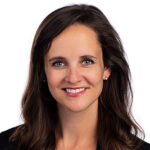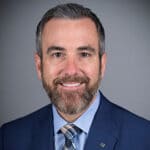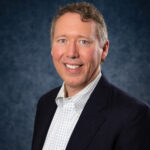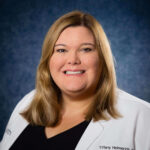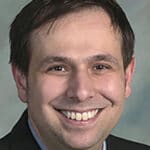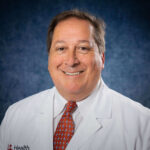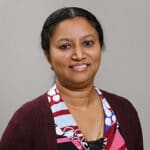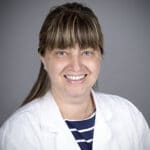UofL Health – Sleep Medicine uses a multi-disciplinary approach to sleep disorders, integrating sleep medicine, pulmonary medicine, psychology, neurology, otolaryngology, oral maxillofacial surgery, dental sleep medicine and bariatric surgery. Our specialists are board certified in sleep medicine by the American Academy of Sleep Medicine.
Sleep Testing
When a sleep study is performed, you will spend one or two nights in one of our private, comfortable rooms, which simulates the home setting. A nearby room is equipped with sophisticated equipment for monitoring sleep stages, patterns, heart activity, blood oxygen levels and body movement. You may also be asked to stay during the day so that we may assess your daytime sleepiness.
Diagnostic testing includes:
- Nocturnal polysomnography with end tidal CO2 monitoring
- Multiple sleep latency testing
- Maintenance of wakefulness testing
- Titration of positive airway pressure as treatment for sleep disordered breathing
- Nocturnal oxygen titration
- Actigraphy
- Initiation and titration of non-invasive mechanical ventilation for patients with chronic respiratory failure including patients with neuromuscular disorders
Treatment
If a sleep disorder is diagnosed, it can be treated effectively with a personalized care plan. Our team of specialists at the UofL Physicians – Sleep Center will evaluate the results of your studies and make recommendations for medication, changes in daily habits or work schedules, or a simple nasal mask to relieve snoring and upper airway obstruction. You may be asked to return to the center for a follow up visit to check your progress, but your primary care physician could manage the long-term treatment of your sleep disorder.
Treatments we provide include:
Continuous Positive Airway Pressure (CPAP) & Positive Airway Pressure (PAP)
PAP is another mode of respiratory ventilation used in the treatment of sleep apnea. A continuous positive airway pressure (CPAP) machine was initially used by patients for the treatment of sleep apnea at home, but now is in widespread use across intensive care units as a form of ventilation. The CPAP machine helps stabilize oxygen levels by delivering a stream of compressed air via a hose to a nasal pillow, nose mask, full-face mask or hybrid, keeping the airway open under air pressure, so that unobstructed breathing becomes possible. For some patients, the improvement in the quality of sleep and quality of life due to CPAP treatment will be noticed after a single night’s use. Often, the patient’s sleep partner also benefits from markedly improved sleep quality, due to the alleviation of the patient’s loud snoring.
Alternatives to CPAP or PAP therapy
- Upper Airway Stimulation: Upper Airway Stimulation is an FDA-approved implantable treatment option for obstructive sleep apnea patients who are unable to use or get consistent benefit from Continuous Positive Airway Pressure (CPAP). While patients sleep, the implantable device delivers mild stimulation to key airway muscles, allowing the airway to open during sleep. The patient uses a small handheld remote to turn the device on before bed and off when they wake up.
- Bilevel positive airway pressure (BPAP): Unlike CPAP, which supplies steady, constant pressure to your upper airway as you breathe in and out, BPAP builds to a higher pressure when you inhale and decreases to a lower pressure when you exhale. The goal of this treatment is to assist the weak breathing pattern of central sleep apnea. Some BPAP devices can be set to automatically deliver a breath if the device detects you haven’t taken one after a designated period of time.
- Oral appliances: These are portable devices designed to keep your throat open. PAP is more effective than oral appliances, but oral appliances may be easier for some patients to use. Some are designed to open your throat by bringing your jaw forward, which can sometimes relieve snoring and mild obstructive sleep apnea.
- Supplemental oxygen: Using supplemental oxygen while you sleep may help if you have central sleep apnea. Various forms of oxygen are available as well as different devices to deliver oxygen to your lungs.
- Adaptive servo-ventilation (ASV): This airflow device learns your normal breathing pattern and stores the information in a built-in computer. After you fall asleep, the machine uses pressure to normalize your breathing pattern and prevent pauses in your breathing. ASV appears to be more successful than CPAP at treating central sleep apnea in some people.
- Surgery: The goal of surgery for sleep apnea is to remove excess tissue from your nose or throat that may be vibrating and causing you to snore, or that may be blocking your upper air passages and causing sleep apnea. Our Sleep Medicine specialists can refer you to a qualified surgeon in the UofL Physicians network.
Pharmacologic (medication) therapies
A variety of medications can be used to alleviate sleep problems. Our team performs a complete evaluation to determine if this course of treatment is best for you.
Cognitive and behavioral therapies (CBT)
CBT helps individuals replace ineffective coping skills, cognitions, emotions and behaviors with more adaptive ones, by challenging an individual’s way of thinking and the way that he/she reacts to certain habits or behaviors that may impact your sleep.


 Medical Office Building
Medical Office Building